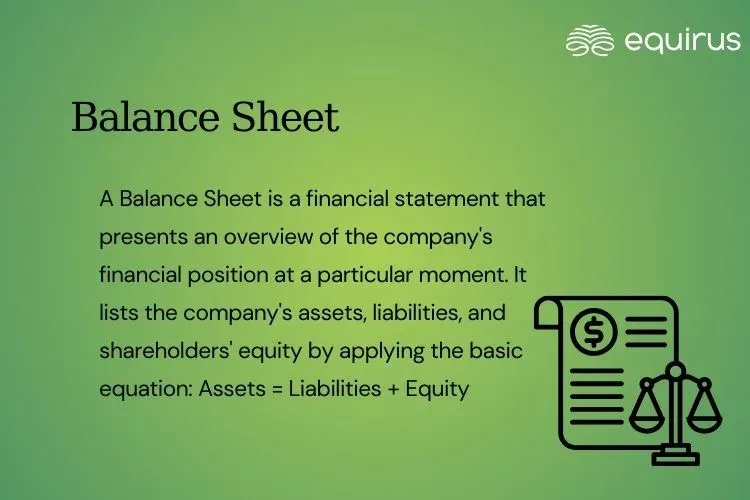Balance Sheet

Key Highlights
-
A Balance Sheet is a financial statement that presents an overview of the company's financial position at a particular moment.
-
In India, all the registered companies are required to prepare and submit their balance sheets annually as per the Companies Act, 2013.
What is Balance Sheet?
A Balance Sheet is a financial statement that presents an overview of the company's financial position at a particular moment. It lists the company's assets, liabilities, and shareholders' equity by applying the basic equation:
Assets = Liabilities + Equity
Key Items in Balance Sheet
1. Assets: What belongs to the company.
2. Current Assets: Cash, inventory, receivables, etc.
3. Non-Current Assets: Property, plant, equipment, long-term investments.
4. Liabilities: What is owed by the company.
5. Current Liabilities: Short-term loans, accounts payable.
6. Non-Current Liabilities: Long-term debt, deferred tax liabilities.
7. Equity: Owner interest in the business.
Includes retained earnings, reserve, and share capital.
Function and Significance
-
Reflects the financial soundness and solidity of a company.
-
Helps stakeholders in measuring liquidity, solvency, and capital structure.
-
Used by investors, management, and creditors for decision making.
Example
Assume that a company's assets are worth ₹10 crore, liabilities worth ₹6 crore, and equity worth ₹4 crore. The balance sheet ensures that:
₹10 crore (Assets) = ₹6 crore (Liabilities) + ₹4 crore (Equity)
Indian Context
In India, all the registered companies are required to prepare and submit their balance sheets annually as per the Companies Act, 2013. The form is standardized under Schedule III of the Act and must comply with Indian Accounting Standards (Ind AS).
